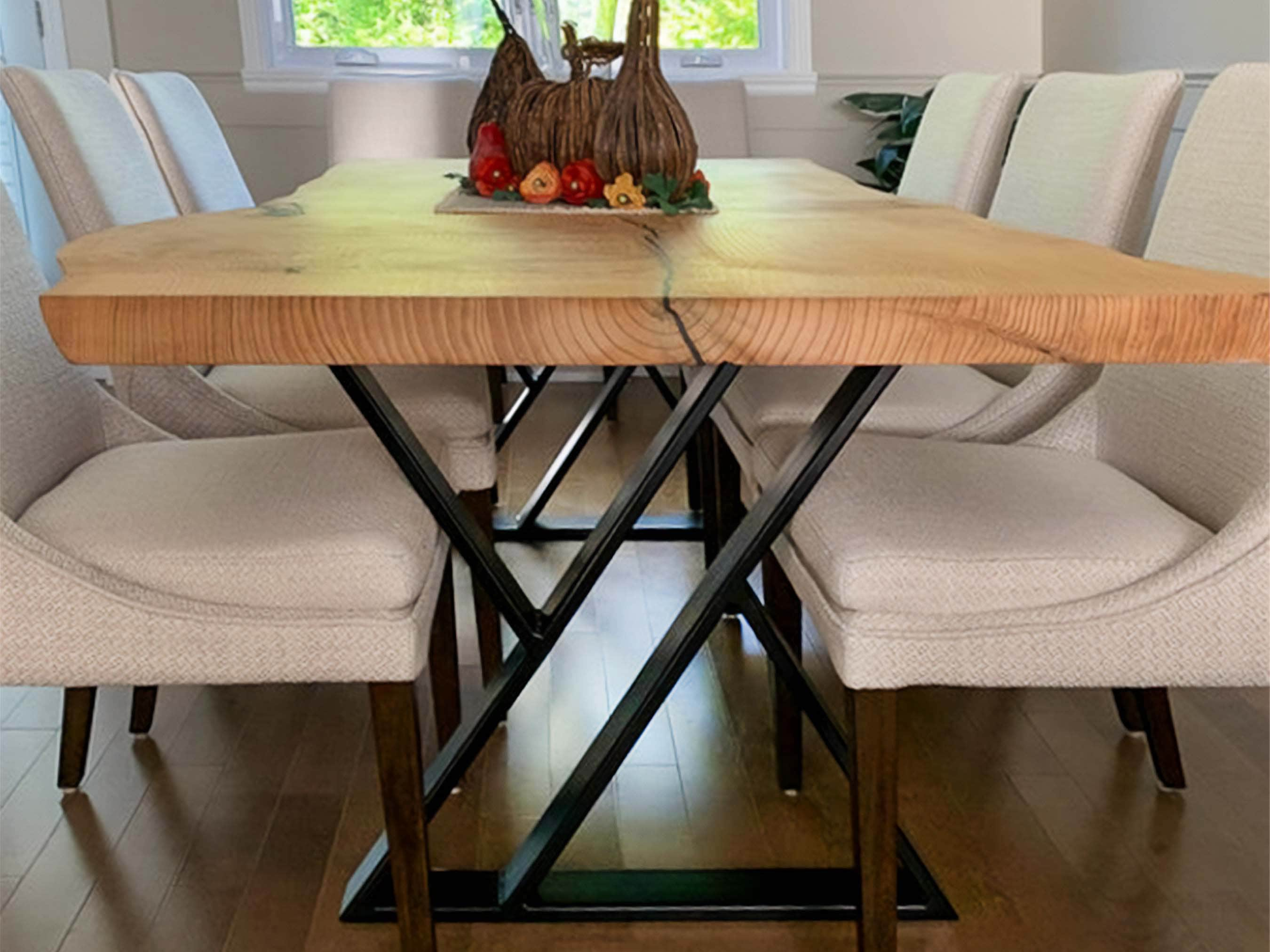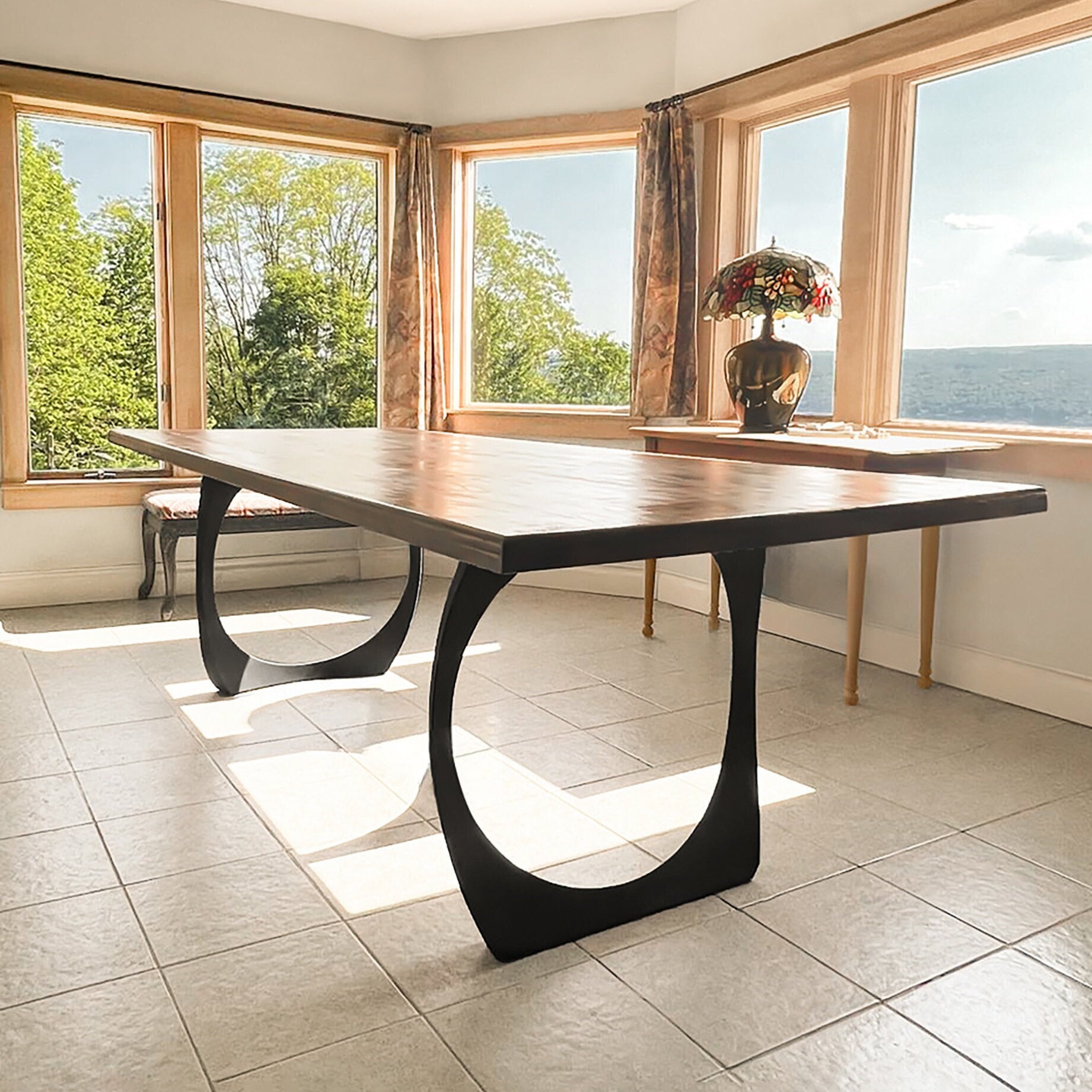Personalized Dining Room Table Legs: A Stylish Enhancement to Any Kind Of Home
Personalized Dining Room Table Legs: A Stylish Enhancement to Any Kind Of Home
Blog Article
Eating Table Legs: Just How to Select the most effective Styles for Your Room
Picking the appropriate eating table legs is vital for both visual and practical harmony in your eating room. Whether your space flaunts a sleek, contemporary vibe or leans towards an extra typical setting, the style of the legs can considerably influence the overall appearance. Conical legs radiate contemporary elegance, while transformed legs provide a nod to classic beauty. Past style, the material-- be it warm timber or smooth metal-- plays a pivotal duty in setting the tone. Just how do you make sure these elements match your existing design while giving the required stability? The solution lies in a well balanced technique.
Assessing Your Dining-room Style
Just how do you determine the most effective eating table legs for your area? The solution starts with a comprehensive analysis of your dining-room style. A cohesive design guarantees that your table legs improve the general visual instead than encounter existing elements. Start by observing the architectural features of your dining-room. Are there popular qualities such as subjected beam of lights, complex moldings, or minimal lines? These information often dictate whether a traditional, rustic, contemporary, or commercial design is most ideal.
A dining area with sleek, modern-day chairs and metallic accents might benefit from straightforward, structured table legs. Conversely, an area filled with classic pieces and abundant fabrics could call for ornate, sculpted legs.
Lighting likewise affects understanding. All-natural light can highlight particular materials and coatings, while synthetic lights can highlight different elements. Account for the room's range and percentages. Large, open eating areas can fit larger, more considerable legs, whereas smaller sized spaces need even more delicate, inconspicuous layouts. By thoroughly examining these factors, you can select eating table legs that sympathetically mix with your dining-room's design.
Popular Leg Styles Clarified

One prevalent design is the conical leg, renowned for its sleek, modern-day look. Next, the transformed leg attributes elaborate spindle-like layouts, often discovered in typical and farmhouse settings.
Cabriole legs, with their unique curves, are synonymous with French Provincial and Queen Anne furnishings. Their elegant, flowing lines bring a sense of class and historic charm (dining room table legs). For those favoring a robust and uncomplicated layout, square legs provide durable support and a tidy, geometric look, perfect for industrial or minimalist areas
Finally, barrette legs supply a retro, mid-century modern vibe. Made from metal, these legs are both lightweight and strong, adding a special aesthetic comparison to wood table tops. Recognizing these designs will certainly guide you in selecting table legs that improve your area's aesthetic and functionality.
Product Considerations

Wood is a traditional option, understood for its heat and adaptability. It comes in different varieties such as oak, walnut, and maple, each offering unique grain patterns and colors. Steel legs, frequently made from stainless-steel, iron, or light weight aluminum, provide a contemporary and commercial look while guaranteeing Read Full Article durable support. They are normally more resistant to use and tear, making them a sturdy choice.

Other materials like bamboo or rattan provide environmentally friendly choices, bringing a natural and loosened Home Page up vibe to the eating area. Each product has its benefits and drawbacks, and the finest selection will rely on your particular demands and preferences.
Balancing Visual Appeals and Capability
Achieving the best equilibrium between appearances and functionality is necessary when choosing dining table legs. While the aesthetic appeal of table legs can substantially boost the overall atmosphere of an eating room, their functional elements can not be forgotten. The style of the legs should balance with the area's decoration, yet they must additionally give sufficient assistance and security for the table.
Take into consideration the architectural design of your area. Smooth, modern-day insides might take advantage of minimalist, metal legs that provide a clean and unobtrusive look. On the various other hand, standard setups often complement turned or carved wooden legs that add a touch of beauty and elegance.
Performance includes the security and longevity of the legs. Trestle legs, recognized for their effectiveness, can supply solid support for bigger tables, making them excellent for families or constant entertainers. Alternatively, pedestal legs can provide more legroom and flexibility, enabling much better seats plans
Additionally, the height and positioning of the legs are critical for comfy eating. Legs placed too much internal may impede seats, while those also close to the edge can restrict motion. Therefore, thoughtful consideration of both visual and practical elements is paramount for an optimum eating experience.
Customization and Do It Yourself Options
Personalization opens up a realm of opportunities for creating eating table legs that are distinctly tailored to your taste and demands. Specific style components, such as transformed legs, tapered shapes, or complex makings, can be incorporated to show your design.
For those likely in the direction of do-it-yourself (DO IT YOURSELF) projects, creating custom-made table legs offers both a gratifying experience and the possibility to attain a bespoke aesthetic. DIY enthusiasts can source basic materials and make use of woodworking or metalworking devices to craft legs that meet accurate specs. Furthermore, many on-line tutorials and workshops provide guidance, making the process much more easily accessible for newbies.
Inevitably, whether selecting professional personalization or embarking on a DIY venture, the ability to tailor table legs makes sure why not look here that the end product integrates with your indoor style vision, improving both performance and aesthetic charm.
Final Thought
Choosing the appropriate eating table legs needs careful factor to consider of the general design of the dining room, consisting of existing architectural attributes and furniture. Ultimately, the selected table legs should enhance the design, providing both aesthetic charm and useful assistance.
Report this page